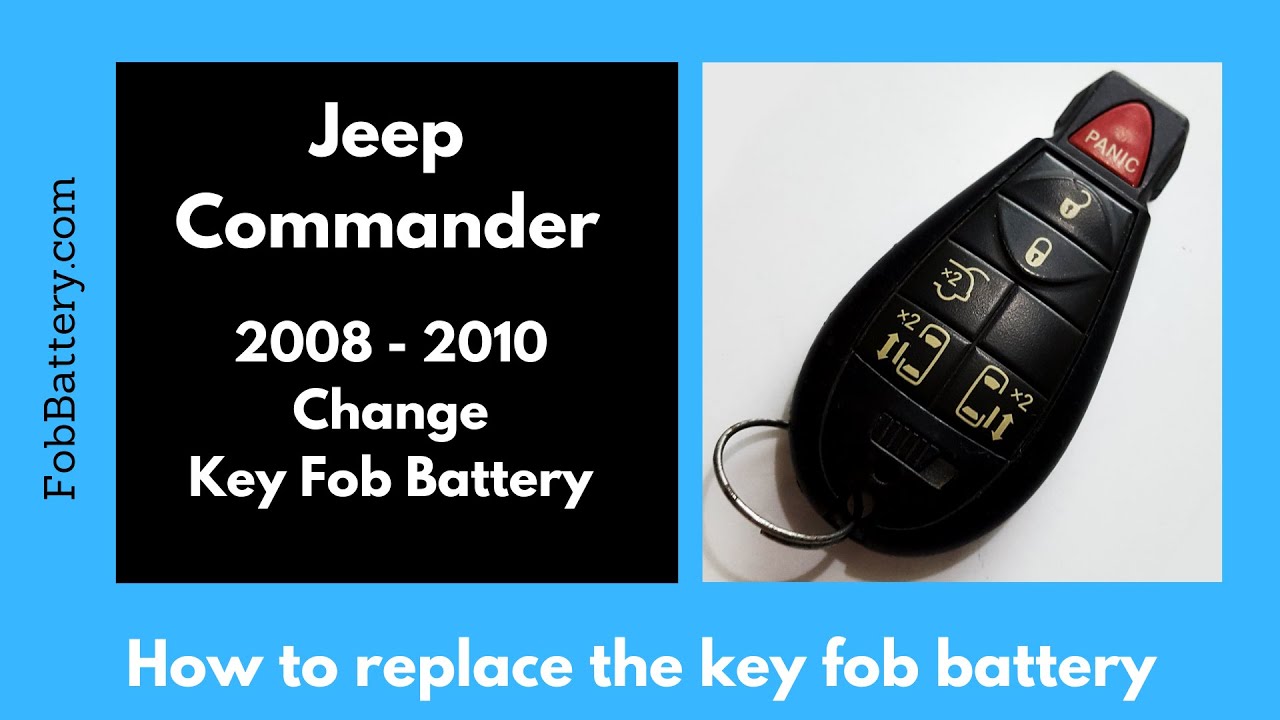Introduction
Changing the battery in your Jeep Commander key fob is a straightforward task that you can easily do at home. This guide will walk you through the process step-by-step. The key fob for the Jeep Commander from 2008 to 2010 uses a CR2032 coin battery, which is inexpensive and readily available online. Let’s dive into the process.
- Plastic, Metal
- Imported
- IN THE BOX: 4-pack of CR2032 3 volt lithium coin cell batteries; replacement for BR2032, DL2032, and ECR2032
Tools and Materials Needed
Before you begin, ensure you have the necessary tools and materials. Here’s what you’ll need:
- Flathead screwdriver
- CR2032 coin battery
Once you have these items, you’re ready to start the battery replacement process.
Step 1: Locate the Key Fob Separation
First, look towards the area with the keyring on your key fob. You’ll notice a separation between the two halves of the key fob. This is where you’ll insert your flathead screwdriver.
Step 2: Insert the Screwdriver
Take your flathead screwdriver and carefully insert it into the separation. Push gently until the screwdriver slides in. Once it’s in place, twist the screwdriver to begin prying the two halves apart.
Step 3: Separate the Key Fob Halves
As you twist the screwdriver, you’ll see the key fob starting to come apart. At this point, you can use your fingers to pull the halves apart or continue working your way down the side with the screwdriver, twisting gently to ensure a safe separation.
Step 4: Remove the Rubber Part and Circuit Board
With the key fob open, you’ll see a rubber part with a circuit board attached. Carefully remove this component to expose the battery compartment.
Step 5: Remove the Old Battery
Now that you have access to the battery, you can remove it. Use your tool or fingers to carefully pop out the old CR2032 battery.
Step 6: Insert the New Battery
Take your new CR2032 battery and make sure the positive side is facing down. Push the battery into the metal component first and then click it down into place.
Step 7: Reassemble the Key Fob
Position the rubber part with the circuit board back on top of the plastic component. Ensure it’s set into place correctly. Finally, click the two halves of the key fob back together.
- Plastic, Metal
- Imported
- IN THE BOX: 4-pack of CR2032 3 volt lithium coin cell batteries; replacement for BR2032, DL2032, and ECR2032
Conclusion
And that’s it! You’ve successfully replaced the battery in your Jeep Commander key fob. This simple process can save you time and money, allowing you to avoid a trip to the dealership.
FAQ
What type of battery does the Jeep Commander key fob use?
The Jeep Commander key fob uses a CR2032 coin battery.
Do I need any special tools to replace the battery?
You only need a flathead screwdriver to open the key fob. No other special tools are required.
How often should I replace the key fob battery?
Typically, a key fob battery lasts about 1-2 years. If your key fob starts to work intermittently or stops working altogether, it’s time to replace the battery.
Can I damage my key fob by replacing the battery myself?
As long as you follow the steps carefully and do not force any components, you should not damage your key fob. It’s a simple and safe process.
Where can I buy a CR2032 battery?
You can purchase a CR2032 battery online or at most electronics stores. They are inexpensive and readily available.
- Plastic, Metal
- Imported
- IN THE BOX: 4-pack of CR2032 3 volt lithium coin cell batteries; replacement for BR2032, DL2032, and ECR2032
If you found this guide helpful, feel free to leave a comment below or give us a like. For more guides like this, visit fobbattery.com. Thank you for reading!


